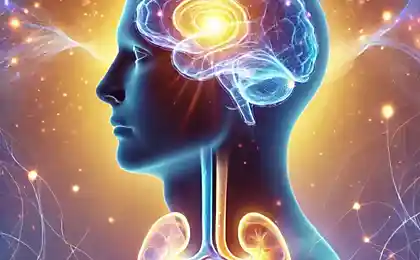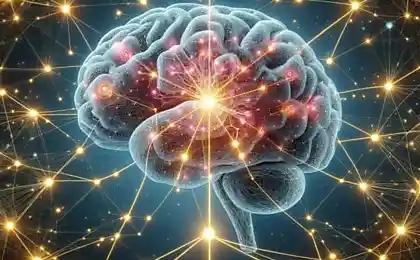10
How to turn anger into a tool for growth, not destruction

Imagine standing in front of a mirror after another emotional explosion, and the reflection shows the wrong person you would like to be. Familiar? Anger is not an enemy to be defeated, but a powerful energy that, when handled properly, can be a catalyst for incredible change in your life.
Contemporary neuroscience reveals striking facts: anger activates the same areas of the brain as motivation to achieve goals. The only difference is whether we direct this energy to destruction or creation. According to the American Psychological Association, people who learn to work constructively with anger have a 23% higher life satisfaction score.
The Anatomy of Anger: Understanding the Mechanism
Anger is an evolutionary survival mechanism that has evolved over millennia from a vital tool to a potentially destructive force in modern life. When we get angry, a biochemical storm occurs in the body: the release of adrenaline increases the heartbeat to 180 beats per minute, cortisol floods the bloodstream, and the prefrontal cortex - the area of the brain responsible for logical thinking - literally shuts down for 6-20 seconds.
Anger is an acid that can cause more harm to the vessel in which it is stored than to what it is poured on.
But what if I told you that this same mechanism could be turned into a turbo engine for personal growth? The secret is not to suppress anger, but to transform it.

Stop Technique: Managed Reboot
1 Physical stop
The moment you feel an angry impulse approaching, literally stop everything. Stop arguing, put your phone down, leave the room. This is not a flight; it is a strategic retreat to regroup forces.
2 Respiratory regulation
Perform the technique "4-7-8": inhale 4 counts, delay 7, exhale 8. This simple technique activates the parasympathetic nervous system, reducing stress hormone levels by 40% in just 3 minutes.
3Mental switching
Say to yourself, “I am angry now, but I choose wisdom over reaction.” This phrase activates the prefrontal cortex and regains control of the situation.
Written therapy: unloading emotional baggage
Dr. James Pennebacker from the University of Texas conducted a groundbreaking study that found that people who practiced expressive writing for just 15 minutes a day showed a 76% improvement in immunity and a 53% decrease in anxiety.
Practical advice: Create an angry diary – a place where you can throw out all your emotions without censorship. Don't edit, don't decorate - just extract all the emotional poison on paper. After a few weeks, you will begin to notice patterns and triggers of your anger.
Movement as a Transformation of Energy
During an attack of anger, a huge amount of energy accumulates in the muscles. If it is not released constructively, it will find a destructive way out. Studies show that 20 minutes of intense physical activity completely neutralizes the chemical effects of stress.
Aggressive cleaning Turn anger at disorder into a perfectly clean space
Combat sports Controlled aggression in a safe environment
Running or brisk walking Monotonous movements calm the nervous system
Dancing to energetic music Creative expression of emotions
Three Questions: Analysis Instead of Reaction

When the wave of anger subsides, it is time for analysis. Three simple questions will help turn emotion into insight:
1. What exactly made me so angry? Be as specific as possible. It's not "he pisses me off," it's "he interrupted me for the third time this evening without giving me a point."
2. Why did it hurt me so much? Dig deep. It may not be a matter of a particular action, but of the fact that it touches your basic values or painful places.
3. What can I and do with it? Translate the emotion into an action plan. Constructive anger always leads to decisions, not accusations.
The Art of Environmentally Anger Communication
The ability to talk about your anger is a master class of emotional intelligence. The formula is simple: “When [a specific action], I feel [an emotion] because [value] is important to me.”
When you didn't show up like you promised, it made me uncomfortable. I’m used to relying on people, and reliability is the foundation of trust.
This approach does not cause a defensive reaction in the interlocutor, but opens the way to mutual understanding and change.
Weekly "anger inventory"
Set aside one evening a week to analyze your emotional outbursts. Keep a journal of anger by noting:
- Trigger Situations and People
- The time of day when you are most irritable
- Physical sensations before the explosion
- Effectiveness of the techniques used
- Long-term patterns
After a month of this practice, you will see clear patterns and be able to prevent emotional outbursts rather than extinguish their consequences.
Transforming anger into a driving force
The most powerful strategy for dealing with anger is to turn it into fuel for change. History has seen many examples of just anger becoming the catalyst for great achievement. Martin Luther King Jr. turned anger at racial injustice into a peaceful civil rights movement. Mother Teresa channeled her anger at poverty into service to the disadvantaged.
It's important to remember: If anger has become your constant companion, if you break down on loved ones for trifles, if you live in a mode of constant tension - this is a signal that it is time to consult a specialist. Chronic anger can be a symptom of depression, anxiety disorder, or emotional burnout.
Creating a personal “anti-anger set”
Make a list of 7-10 activities that are guaranteed to help you regain your emotional balance. This is your personal first aid kit for emotional crises.
Contrast shower (activates the production of endorphins)
Listening to your favorite music (reduces cortisol by 25%)
Calling an understanding friend (social support)
Watching funny videos (laughter is a natural antidepressant)
Aromatherapy (lavender, mint reduce anxiety)
Hugs with a pet (increases oxytocin)
Meditation or prayer (activates parasympathy)
Conclusion: Anger as an Ally
Anger is not an enemy to be defeated, but an energy to be directed in a constructive way. Learning to work with this powerful emotion gives you access to an incredible source of motivation and power to change.
Remember, every anger attack is an opportunity to get to know yourself better, define your boundaries and values, and then act on them. Turn your anger from a destroyer to an architect of a better version of yourself.
Glossary
cortisol
Stress hormone produced by the adrenal glands in response to threat or tension
Prefrontal cortex
Brain area responsible for logical thinking, planning and impulse control
Parasympathetic nervous system
Part of the autonomic nervous system responsible for restoring and relaxing the body
Expressive letter
Therapeutic technique in which a person records their thoughts and feelings without censorship
Emotional intelligence
Ability to be aware of, understand and manage your own emotions and those of others
Oxytocin
Hug hormone, promotes attachment and reduce stress
The article is prepared on the basis of modern research in the field of neuroscience and psychology of emotions























